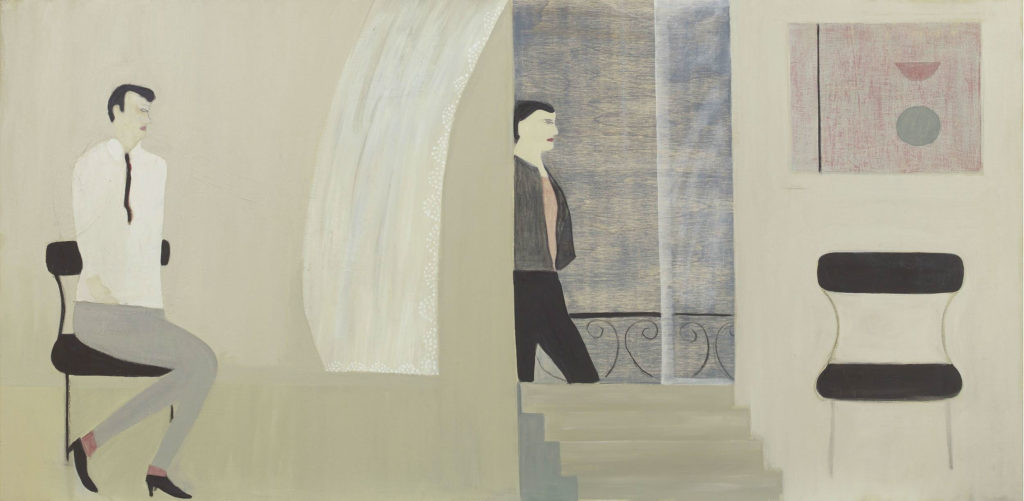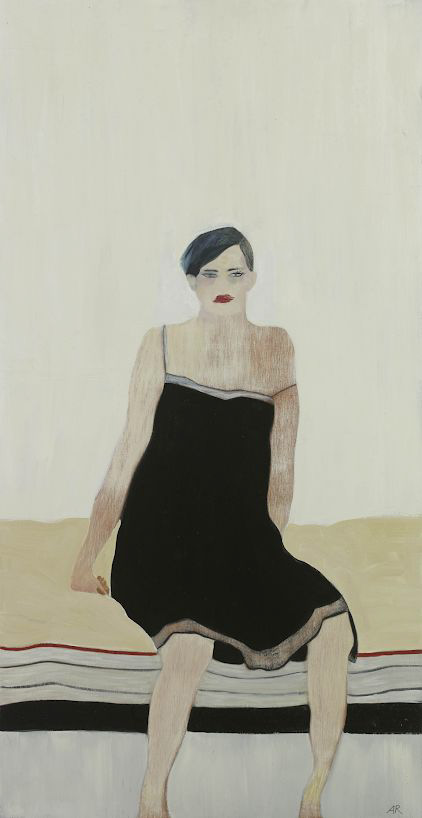About the artist

Anne Rothenstein
“I always start with an image which has caught my imagination. Why something arrests my eye at any particular time is the most interesting question.”
Following ten years in acting, Rothenstein has been painting full time since 1982; a move informed by her background, as she hails from a family of esteemed artists and creators. Rothenstein draws much of her inspiration from art that participates in the formal conventions and techniques of Outsider Art. Her figures, registered in a naive form, seem to exist at a slight remove from reality, grounded in vaguely recognisable environments, yet without any distinguishing features to link them to a particular time or place. The stripped back formal qualities of the works, which merge intricate patterning and fine details with single-colour block forms, create compositions which hover somewhere between minimalism and decadence. Realism is eschewed in favour of a more intuitive approach to representing people and objects. Resultantly, the narratives contained in Rothenstein’s work come to the viewer obliquely, through her capacity for subtle suggestion, obtained through her method of capturing entire stories or a series of emotions within a few gestures, details, or even a noticeable uncanny absence.
Writing of Rothstein’s work, in response to the exhibition in which Interior Afternoonwas shown, highly regarded writer, novelist and critic Deborah Levy comments: “Anne Rothenstein has mastered a technique that is in conversation with the emotional language of Francis Bacon and the unassuming spontaneity of Outsider art. Her paintings give value to the weight of thought itself, embodied as much in the space between her androgynous, brooding protagonists, as anything else - a chair, a lamp, a window, an animal, the way the light falls.
While every painting is formally resolved – after all their composition is designed with the eye of a modernist artist – at the same time there is a refreshing lack of resolution to whatever it is that bothers her stylish personae. Their appeal is that her paintings conceal more than they reveal.”

